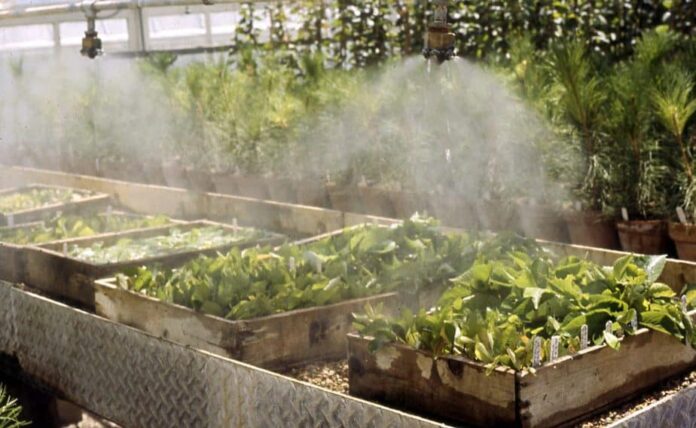In greenhouses, you can grow plants that are heat-loving, such as subtropical and tropical plants that thrive entirely in humid conditions These include: Tropical Plants RH 85-95% Subtropical plants RH 75-80% or 50-75 percent. Based on the kind of greenhouse (cold or hot) and the season and the kind of plant the air humidity levels must be modified.
Dust as well as heat and dry air can cause damage to plants! In the winter garden, humidity levels aren’t as high in the case of a garden that forms part of the dwelling area and is also a recreation area and is utilized to grow banyan tree, flat-leaf fescues, succulents, as well as other earthy plants that do not have the highest demands on moisture. But, even in this case where the plants are in large amounts, it’s difficult to control the situation with an irrigation system on its own.
Best greenhouse humidifiers Misting systems
In contrast to ultrasonic humidifiers which in the past were thought to be as the best option for humidification in greenhouses. misting systems using high pressure nozzles (70-100 bar) offer more consistent humidification and are built to work in any location.
Misting systems for gardens and greenhouses don’t require frequent replenishment of tanks since they function automatically. They connect to water sources via an filtration system that is multi-stage. They also have numerous advantages:
- Uneven humidification throughout all areas of the greenhouse regardless of the size.
- The ability to keep varying levels of humidity, from a minimum of 98%..
- Multiple areas of the greenhouse could be maintained in a single system.
- Possibility of auto-maintenance of the required humidity and programming (when the controller is that is connected to an thermometer).
- Stealth Small nozzle size set on the floor above (below the ceiling) to not draw the attention of others, it can be placed in winter gardens and greenhouses with different ceiling and wall designs.
- The size of the droplet should be no larger than 5-15 microns. The fog is within the atmosphere for an extended period of time, creating conditions that are conducive for growth as close to tropical conditions as is possible.
- Dust suppression.
- Power consumption is low.
- It is possible to combine various irrigation systems as well as fine irrigation.
- It is easy to install and maintain.
The system speeds up the growth of vegetation and boosts the performance in the greenhouse. Furthermore greenhouses and spray systems stop the disease from spreading to other plants, which allows them to be cultivated more effectively. The second major role of a mist device that is used in greenhouses is to combat the high temperatures. Because of its misting technology, chances of plants becoming overheated is reduced in the summer months, their transpiration is increased and the requirement for shade is less.
Improve the efficiency of the greenhouse
They can provide high yields and shield seedlings, vegetables and plants from diseases and heat as well as dry air. Additionally the greenhouse spray systems permit the feeding of foliars as well as spraying plants using protection solutions.
Minimal intervention – maximum comfort
To help make gardening inside a greenhouse in a winter garden a pleasurable experience the automated system should be utilized to control the microclimate. To achieve this the atomization method as well as the pump, filter and stainless steel or nylon lines fitted with high-pressure nozzles the electronic controller must be in place to determine the sensor for humidity (hygrometer) also known as a temperature sensor. With the aid of a controller, every element of the greenhouse could be controlled individually according to the relative humidity and time or temperature.















